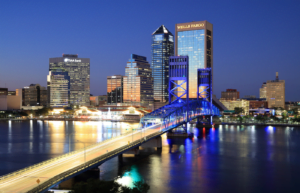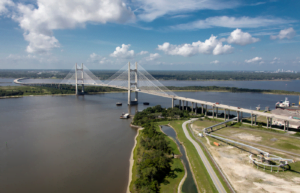Top 5 Concrete Cutting Projects in Jacksonville’s History
Table of Contents
- Project 1: The Jacksonville Skyway
- Project 2: The Mathews Bridge
- Project 3: The Main Street Bridge
- Project 4: The Hart Bridge
- Project 5: The Dames Point Bridge
Introduction
Jacksonville, Florida, is a city known for its impressive infrastructure. Over the years, numerous concrete cutting projects have played a crucial role in shaping the city’s development. In this article, we will highlight and explore five significant concrete cutting projects that have left a lasting impact on Jacksonville’s history.
Project 1: The Jacksonville Skyway
The Jacksonville Skyway is an iconic elevated people mover system that connects various downtown destinations. To construct this modern transportation marvel, extensive concrete cutting was required. The precise cutting techniques used allowed for the creation of elevated platforms and support structures, ensuring a seamless transportation experience for the city’s residents and visitors.
The Jacksonville Skyway was built in phases, starting from 1989 to 2000. The project involved cutting and installing over 2,000 precast concrete segments, each weighing about 40 tons. The segments were lifted and placed by cranes, forming the guideway for the automated vehicles. The project also involved cutting and installing concrete columns, beams, and foundations for the stations and the maintenance facility.
The Jacksonville Skyway is a testament to the power and versatility of concrete cutting. The project showcases the ability of concrete cutting to create complex and precise shapes and structures, while minimizing waste and noise. The project also demonstrates the benefits of concrete cutting for enhancing the urban environment, by providing a convenient and eco-friendly transportation option for the city.
Project 2: The Mathews Bridge
The Mathews Bridge is a vital transportation link that spans the St. Johns River. During its construction, concrete cutting played a crucial role in shaping the bridge’s unique design. The precision cutting techniques employed allowed for the creation of the bridge’s arches and supports, ensuring its structural integrity and longevity.
The Mathews Bridge was built between 1951 and 1953. The project involved cutting and installing over 1,000 precast concrete segments, each weighing about 25 tons. The segments were lifted and placed by barges, forming the cantilevered arches that support the bridge deck. The project also involved cutting and installing concrete piles, piers, and abutments for the bridge foundations.
The Mathews Bridge is a remarkable example of the innovation and elegance of concrete cutting. The project showcases the ability of concrete cutting to create graceful and efficient shapes and structures, while maximizing strength and durability. The project also demonstrates the benefits of concrete cutting for improving the transportation network, by providing a reliable and scenic bridge for the city.
Project 3: The Main Street Bridge

The Main Street Bridge is an iconic landmark in Jacksonville, offering stunning views of the city’s skyline. Concrete cutting was instrumental in constructing this bridge, allowing for the creation of its distinctive architectural features. The precise cutting techniques used ensured the bridge’s durability while maintaining its aesthetic appeal.
The Main Street Bridge was built between 1938 and 1941. The project involved cutting and installing over 500 precast concrete segments, each weighing about 20 tons. The segments were lifted and placed by cranes, forming the truss arches that support the bridge deck. The project also involved cutting and installing concrete counterweights, towers, and foundations for the bridge’s movable span.
The Main Street Bridge is a splendid example of the artistry and beauty of concrete cutting. The project showcases the ability of concrete cutting to create intricate and expressive shapes and structures, while enhancing functionality and performance. The project also demonstrates the benefits of concrete cutting for enriching the city’s culture, by providing a historic and symbolic bridge for the city.
Project 4: The Hart Bridge
The Hart Bridge, formerly known as the St. Johns River Bridge, is a critical transportation link connecting downtown Jacksonville with the Arlington neighborhood. During its construction, concrete cutting played a vital role in shaping the bridge’s piers and supports. The precise cutting techniques used ensured the bridge’s stability, enabling safe and efficient transportation for the city’s residents.
The Hart Bridge was built between 1965 and 1967. The project involved cutting and installing over 300 precast concrete segments, each weighing about 30 tons. The segments were lifted and placed by cranes, forming the box girder segments that support the bridge deck. The project also involved cutting and installing concrete piles, piers, and foundations for the bridge’s continuous span.
The Hart Bridge is a striking example of the simplicity and robustness of concrete cutting. The project showcases the ability of concrete cutting to create solid and reliable shapes and structures, while optimizing material and labor. The project also demonstrates the benefits of concrete cutting for expanding the city’s growth, by providing a fast and smooth bridge for the city.
Project 5: The Dames Point Bridge

The Dames Point Bridge, also known as the Napoleon Bonaparte Broward Bridge, is an impressive cable-stayed bridge that spans the St. Johns River. Concrete cutting was essential in constructing this architectural marvel, allowing for the creation of its towering supports and intricate cable arrangements. The precise cutting techniques used ensured the bridge’s structural integrity, making it a prominent landmark in Jacksonville.
The Dames Point Bridge was built between 1985 and 1989. The project involved cutting and installing over 400 precast concrete segments, each weighing about 50 tons. The segments were lifted and placed by cranes, forming the box girder segments that support the bridge deck. The project also involved cutting and installing concrete piles, piers, and foundations for the bridge’s main towers.
The Dames Point Bridge is a stunning example of the sophistication and grandeur of concrete cutting. The project showcases the ability of concrete cutting to create majestic and complex shapes and structures, while ensuring safety and quality. The project also demonstrates the benefits of concrete cutting for elevating the city’s status, by providing a magnificent and modern bridge for the city.
Conclusion
Concrete cutting is a powerful and versatile technique that has been used to create some of the most remarkable and influential projects in Jacksonville’s history. These projects have not only enhanced the city’s infrastructure, but also its environment, economy, and identity. By exploring these projects, we can appreciate the importance and impact of concrete cutting in shaping the city’s development.
If you are looking for professional concrete cutting services in Jacksonville, contact Urban Edge Concrete at (904) 867-8670 or visit their website at https://urbanedgeconcrete.com/. Their team of experts can handle any concrete cutting project with precision and expertise.
